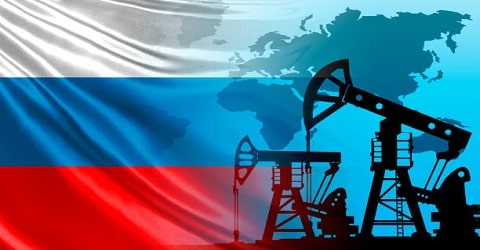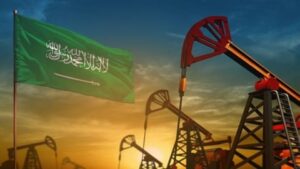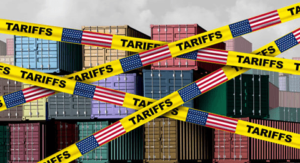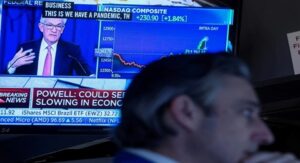
The Rise and Fall of Russia's Gas Dominance
Russia’s gas dominance once stood as an unassailable pillar of Russia’s economic might, wielding influence and commanding markets. Yet, the abrupt halt of gas deliveries to the EU in 2022 marked the beginning of a seismic shift. As prices soared and Europe diversified its energy sources, Russia’s grip began to falter.
Now, faced with dwindling profits and geopolitical challenges, Russia navigates a precarious path to reclaim its position. With options ranging from pipeline expansions to ramping up LNG exports, the journey ahead is fraught with uncertainty. Will Russia adapt and regain its foothold, or witness the erosion of its once formidable gas dominance?
Russia’s Gas Dominance Dilemma
In 2022, when Russia wielded its gas supply as a geopolitical weapon, the move seemed cunning. However, the consequences of this decision have unfolded in unexpected ways, revealing critical vulnerabilities in Russia’s energy strategy.
Here are seven key points elucidating the repercussions of Russia’s gas standoff with the EU and its quest to revive gas sales amid shifting global dynamics:
Table of Contents
1. The Gas Embargo Fallout
In 2022, Russia’s strategic move to cut off most gas deliveries to the EU spiked prices, potentially boosting profits despite lower export volumes. Yet, by 2024, Europe’s gas reserves swelled due to mild winters and increased LNG imports from the US, challenging Russia’s gas dominance. Consequently, Gazprom, Russia’s state-owned gas giant, struggles financially.
In contrast, Europe, once heavily reliant on Russian gas, diversified its sources, mitigating the impact of the embargo on prices and ensuring ample reserves. Gazprom’s inability to exploit high prices underscores the shifting dynamics in the global gas market, with repercussions for both Russia and Europe’s energy security and economic strategies.
Read More: The Economics of War: A Comprehensive Analysis
2. Challenges in Gas Redirecting
In 2021, Russia grappled with formidable obstacles in rerouting its substantial gas exports from Europe, constituting 80% of its total. Unlike Nord Stream, facilitating gas flow to Germany, Russia lacks LNG production infrastructure and dedicated vessels. This deficiency, once peripheral, assumes criticality with growing gas export reliance amid sanctions and volatile oil prices.
Europe’s 40% gas purchase from Russia underscores significant dependence, while the nation’s gas exports to Europe represent 80% of its total. Hindered by inadequate LNG facilities and transport, Russia struggles to redirect gas elsewhere, spotlighting a pressing need for infrastructural adaptation amidst evolving geopolitical and economic landscapes. Russia’s gas dominance further complicates its efforts to diversify its export destinations and reduce dependency on European markets.
Read More: Geopolitics of Economic Development in the Middle East
3. Cash Crunch and Energy Security
Russia faces economic instability due to its heavy reliance on oil revenue, exacerbated by shifting global energy demands favoring cleaner fuels like gas. With Europe reducing its dependence on Russian gas, Russia must diversify its markets or enhance LNG capabilities to sustain its economy amidst Russia’s gas dominance. Between 2018 and 2023, only 20% of Russia’s hydrocarbon export revenue came from gas, highlighting its vulnerability to fluctuations in oil prices.
The International Energy Agency forecasts a peak in global energy demand this decade due to the green transition, further challenging Russia’s oil-dependent economy. To ensure long-term stability, Russia must prioritize revitalizing gas sales and adapting to the evolving energy landscape.
Read More: Crucial Role of European People’s Party: From Crisis to Opportunity
4. Pipeline vs. LNG Expansion
Russia is strategically expanding gas exports through pipeline infrastructure and LNG production, bolstering Russia’s gas dominance. The operational Power of Siberia pipeline, serving China, seeks expansion. Yet, negotiations for the Power of Siberia 2 pipeline, aimed at China’s rising gas demand, face hurdles over contract terms.
Concurrently, LNG production growth offers market flexibility, hindered by sanctions and technological obstacles. The Power of Siberia pipeline targets a delivery increase to 38bcm by 2025, while the proposed Power of Siberia 2 could potentially carry 50bcm/year by 2029. Russia aims to elevate LNG production to 100m tonnes by 2030, a substantial rise from the prior year’s 31m tonnes.
Read More: China’s Economic Outlook: Reforms, Challenges, and Global Impact
5. Uncertainties in Chinese Partnership
Russia sees China as a key gas market, yet doubts persist about pipeline project feasibility and conditions. China, prioritizing energy security, approaches cautiously, aiming to broaden gas supply sources. Meanwhile, LNG imports from the US and Qatar further complicate Russia’s negotiating position, challenging Russia’s gas dominance.
Projections suggest China’s gas demand could hit 600bcm by 2029, spurring ongoing pipeline talks. However, Russia encounters hurdles in clinching advantageous export terms amid energy security worries and rival supplier pressure.
6. LNG Expansion Ambitions
Russia’s gas dominance is a critical factor in its LNG production ambitions for global competitiveness. However, sanctions impede access to vital Western technologies and investments, slowing infrastructure development. With flagship projects encountering setbacks and foreign investors retracting, Russia turns to domestic alternatives, decelerating LNG expansion.
Targeting 100 million tonnes in exports by 2030 with a 20% market share, Russia faces hurdles like sanctions and technological barriers stalling infrastructure growth. Predictions indicate LNG production may only hit 40 million tonnes by 2035, missing ambitious goals.
Read More: The Irony of American-Chinese Economic Relations
7. Future Outlook and Economic Realities
Russia’s aspirations to regain lost revenue from European gas sales, amidst challenges such as sanctions and global shifts, face formidable obstacles. The worldwide shift towards renewable energy and stringent sanctions create a bleak outlook for Russia’s energy dominance.
Forecasts indicate a brief period for gas supremacy, prompting Russia to confront tough choices in managing its energy sector amidst geopolitical tensions and environmental concerns. Sanctions and global shifts pose significant challenges to Russia’s future as a primary energy provider.
The uncertainty surrounding Russia’s capacity to recover lost revenue from European gas sales is exacerbated by evolving market dynamics and environmental imperatives.
Bottom Line
Russia’s gas gambit, designed to assert geopolitical leverage, has instead exposed the vulnerabilities of its energy sector, particularly in light of Russia’s gas dominance. As the global energy landscape undergoes seismic shifts towards sustainability and diversification, Russia faces formidable challenges in adapting its energy strategy to remain competitive.
Failure to address these challenges could jeopardize Russia’s position as a leading energy player, underscoring the imperative for strategic recalibration in the face of evolving geopolitical and environmental realities.





